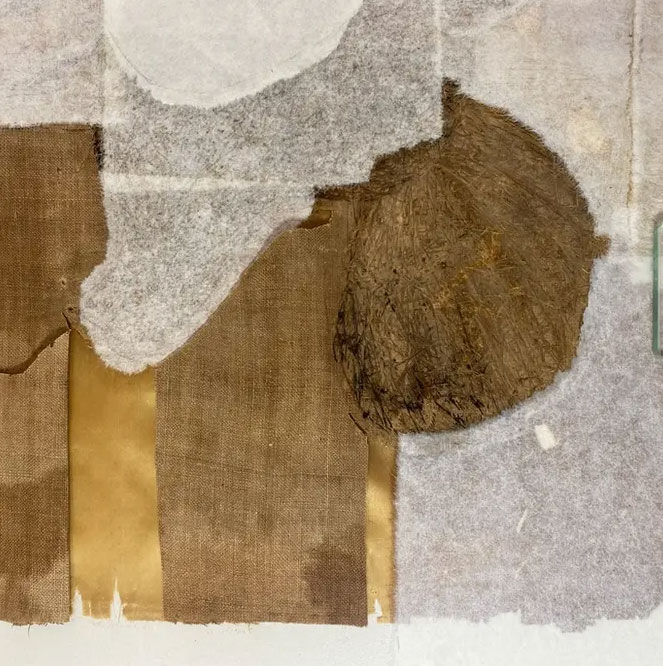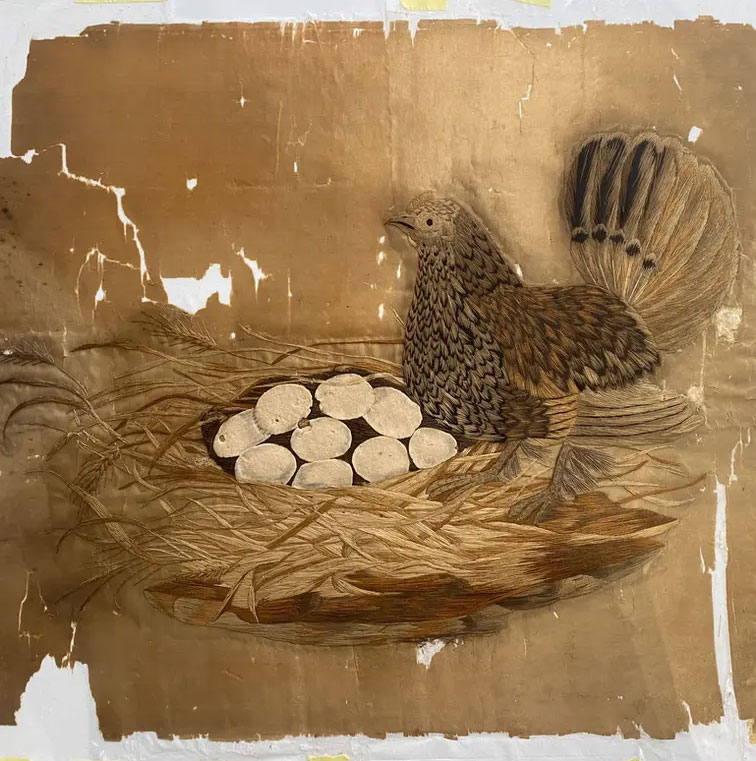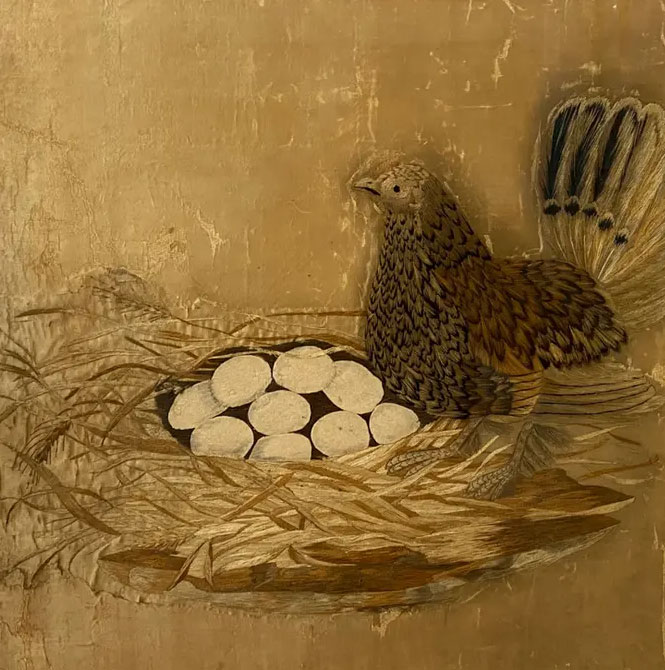
This late 19th Century embroidery, of a hen sitting beside her nest of eggs, probably originated in the Orient. The delicate quality of the exquisite embroidery is similar to that produced in Japan, such as the Meji period – from 1868 to 1912. The feathers on the hens’ body are so realistic.
The embroidery was found in a barn, covered in dust and cobwebs but miraculously it survived the damp and dusty environment, although the satin ground fabric was damaged. Insect damage is evident in the wool fabric of the clutch of eggs.

The embroidery was removed from the timber stretcher to enable it to be conserved. In addition, what remained of the open-weave backing fabric had to be cut away from around the embroidery stitches.

The silk was too brittle to withstand conservation stitching so it was supported onto Japanese tissue – 18gm kozo paper – a conservation paper made from mulberry fibre. It was adhered in position using prepared wheat-starch paste.

Once conserved, a conservation-grade frame was commissioned, with non-reflective glazing and UV filtration, to enable the embroidery to be safely displayed.